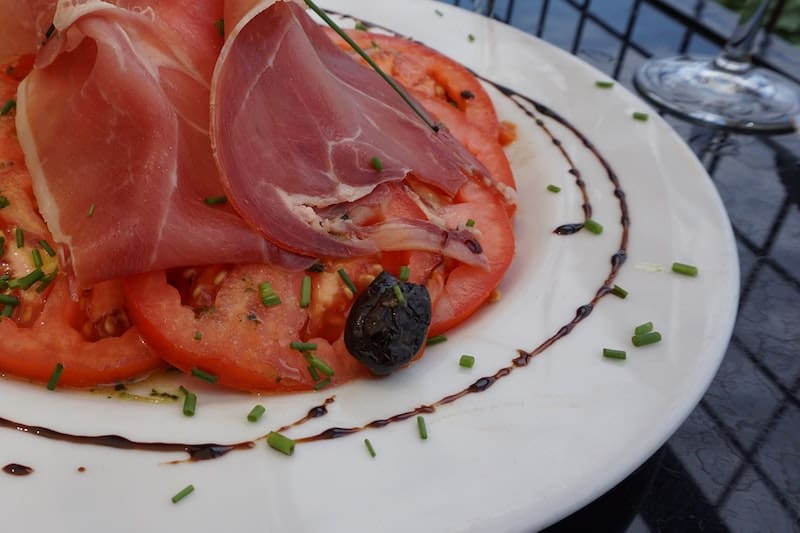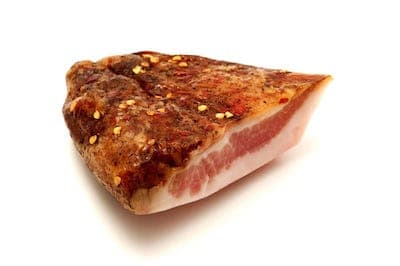Is Prosciutto a Processed Meat?
Awareness of the health risks associated with processed meat has grown in recent years. Many Italian, dry-cured meat enthusiasts now wonder – is prosciutto a processed meat? Of course, no one wants to learn that their favorite food is potentially harmful to their wellbeing.
The short answer is – yes, prosciutto is, by definition, considered a processed meat. However, it isn’t that simple. We don’t yet know for sure whether all processed meats are equally harmful.
In this guide, I’ll explain what defines a processed meat, why processed meats are bad for you, and signs that indicate that you should decrease your processed meat intake.
What Defines Processed Meat?
The media and healthcare specialists often talk about the dangers of processed meat. But what exactly is processed meat?
Processed meat has undergone treatment aimed at preserving or enhancing its flavor. Processing methods vary, including smoking, curing, fermenting, and salting. Think bacon, guanciale, or pepperoni. One study shows that 22% of all meat sold in the US is processed.
Processed meats can be both red (beef, pork) and white (chicken, turkey). While white meat is rarely cured or fermented, it’s commonly salted or smoked. Even slightly salted chicken slices may have a long-term impact on your health.
The ingredients that make processed meats bad for your health are preservatives, particularly nitrates and an excessive amount of salt.
For the record, regular consumption of processed meat (and other processed foods) may lead to heart disease, high blood pressure, chronic obstructive pulmonary disease, and even bowel and stomach cancer.
Nitrites are added to meat to enhance its flavor, give it a brighter pink color, and prevent the growth of bacteria. Technically, nitrites serve a good purpose, yet you should be mindful of the amount you consume.
Nitrites in processed meat may turn into nitrosamines, also found in tobacco and contaminated water. They’re mainly formed when processed meat is exposed to heat over 266 degrees Fahrenheit. Nitrosamines are known to increase the risk of cancer.
Meat smoking may be harmful as it leads to the formation of polycyclic aromatic hydrocarbons (PAHs). They form when an organic substance – in this case, meat or coal – burns.
Additionally, even regular table salt isn’t completely harmless – excessive salt intake can lead to hypertension and heart disease.
Is Prosciutto Considered a Processed Meat?
Prosciutto is considered processed meat because it’s cured (which also means it’s not cooked).
Traditionally, Italian prosciutto is made by generously rubbing a piece of meat with salt and herbs like thyme and garlic. No chemical agents such as nitrites should be used in the preparation of real prosciutto.
The meat is left to hang and dry for about a week in a cool place. Bacteria only breed in warm and humid environments, and curing is necessary to remove excess water from the meat.
After this process, the meat is washed thoroughly from salt that absorbs the water and bacteria.
After washing, the meat is yet again hung in a cool, dry place for up to three months. Exposure to the air dries and hardens the surface.
Lastly, the meat is checked for potential signs of spoilage – experts inspect its smell and appearance.
As no chemical elements such as nitrites are used in the curing process, prosciutto is less harmful than other processed meats, such as bacon or sausage.
Still, excessive consumption of prosciutto may raise the salt level in your body, potentially leading to high blood pressure, heart disease, and stroke.
It may also cause calcium loss, which makes bones more fragile. This can usually be balanced by taking supplements and eating foods lower in salt.
Here are the symptoms of consuming too much salt:
- Persistent thirst
- Constant urge to urinate
- Swelling
- Craving for salty foods
- Mild headaches
- Finding non-salty foods too bland
If you start to experience these symptoms regularly, you may need to lower your salt intake. If you feel fine on a daily basis, you’re safe to eat prosciutto in moderation.
Are All Cured Meats Processed?
The short answer is – yes, all cured meats are processed, though the content or harmful chemicals in them varies greatly. Cured meats include:
- Prosciutto
- Chorizo
- Pepperoni
- Bacon
- Pancetta
- Lardo
- Guanciale
- Pastrami
Experts don’t yet know exactly how much processed meat individuals can consume safely.
A study by Harvard University notes that most researchers don’t distinguish between red and white processed meats or between meat with nitrites and nitrite-free meat.
Meats typically high in nitrites include pepperoni, American bacon, ham, deli meat, and various types of sausages. Meats cured by traditional Italian recipes, such as pancetta and prosciutto, however, shouldn’t contain nitrites.
Is Prosciutto Carcinogenic?
You may’ve heard that processed meats increase the risk of getting oncological diseases. This is true, according to numerous studies.
Chemicals from processed meats are known to damage cells in the colon and rectum, which can lead to cancer. The World Health Organization classified all processed meats as cancerogenic in 2015.
However, experts studying the links between processed meat and cancer don’t mention which type of processed meat was used in the research.
Some data suggest that nitrite-treated meat is more cancerogenic than meat treated with salt. Potentially, therefore, prosciutto is less harmful to your heath than bacon.
This isn’t yet accepted by the World Health Organization, and you should still be mindful of your prosciutto intake. For instance, the UK Department of Health recommends consuming no more than 2.4 ounces of red processed meat a day, which includes prosciutto.
FAQs
What is the primary method of preserving prosciutto?
Prosciutto is preserved primarily through curing, which involves generously rubbing the meat with salt and sometimes herbs. This method removes excess water from the meat, preventing bacterial growth.
How does traditional prosciutto differ from other processed meats in terms of additives?
Traditional prosciutto is made without the use of chemical agents like nitrites. Instead, it relies on salt and natural drying processes, making it potentially less harmful than other processed meats that contain chemical preservatives.
Is there a difference in health risks between meats processed with nitrites and those without?
Some data suggest that meat treated with nitrites might be more carcinogenic than meat treated only with salt. However, more research is needed to confirm these findings.
How can one determine if they are consuming too much salt from prosciutto or other sources?
Symptoms of excessive salt consumption include persistent thirst, a constant urge to urinate, swelling, cravings for salty foods, mild headaches, and finding non-salty foods too bland. If these symptoms are experienced regularly, it might be an indication to reduce salt intake.
Are there any traditionally cured meats that are considered safe for regular consumption?
While traditional curing methods, like those used for prosciutto and pancetta, might be less harmful due to the absence of nitrites, it’s essential to consume them in moderation. The overall salt content and other factors still need to be considered for overall health.
In Summary
Hopefully, you now understand that prosciutto is a processed meat and should be eaten in regulation.
As with any food, the amount you consume is key to a healthy lifestyle. You don’t have to stop eating prosciutto entirely. You can enjoy a few slices of your favorite delicacy as a snack every so often, but don’t exceed the recommended serving.
Furthermore, you should also keep in mind your intake of other processed foods.







